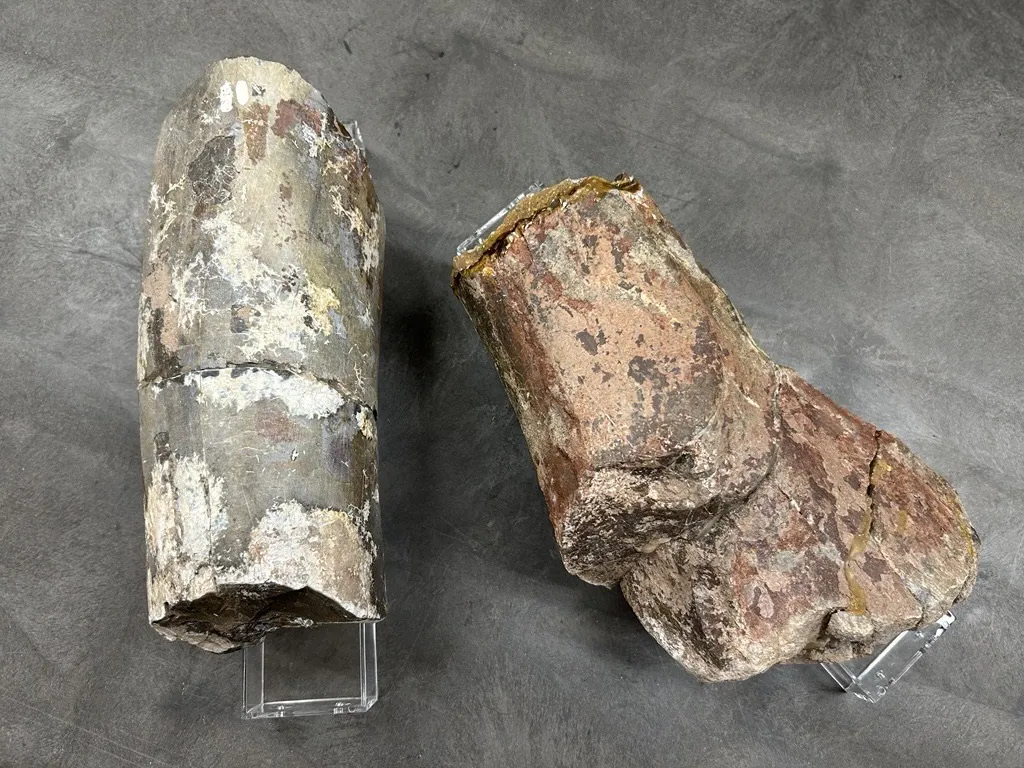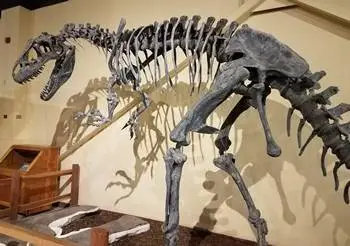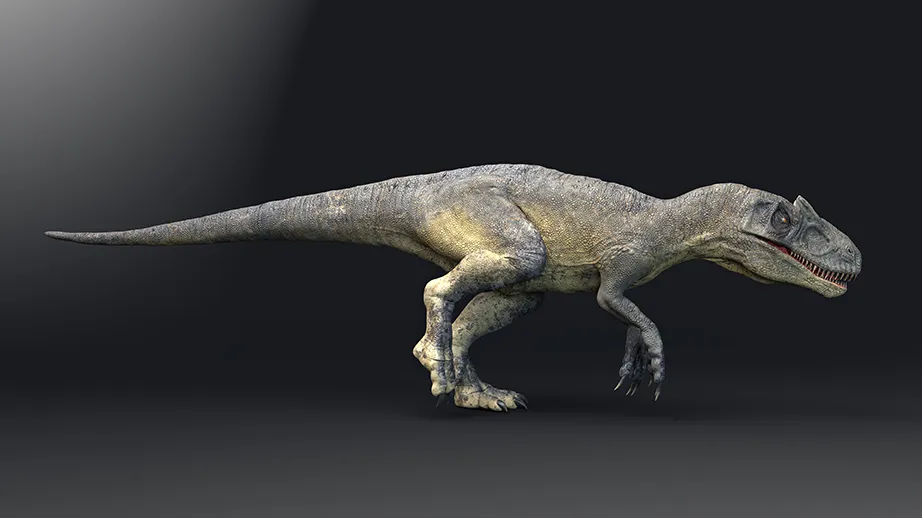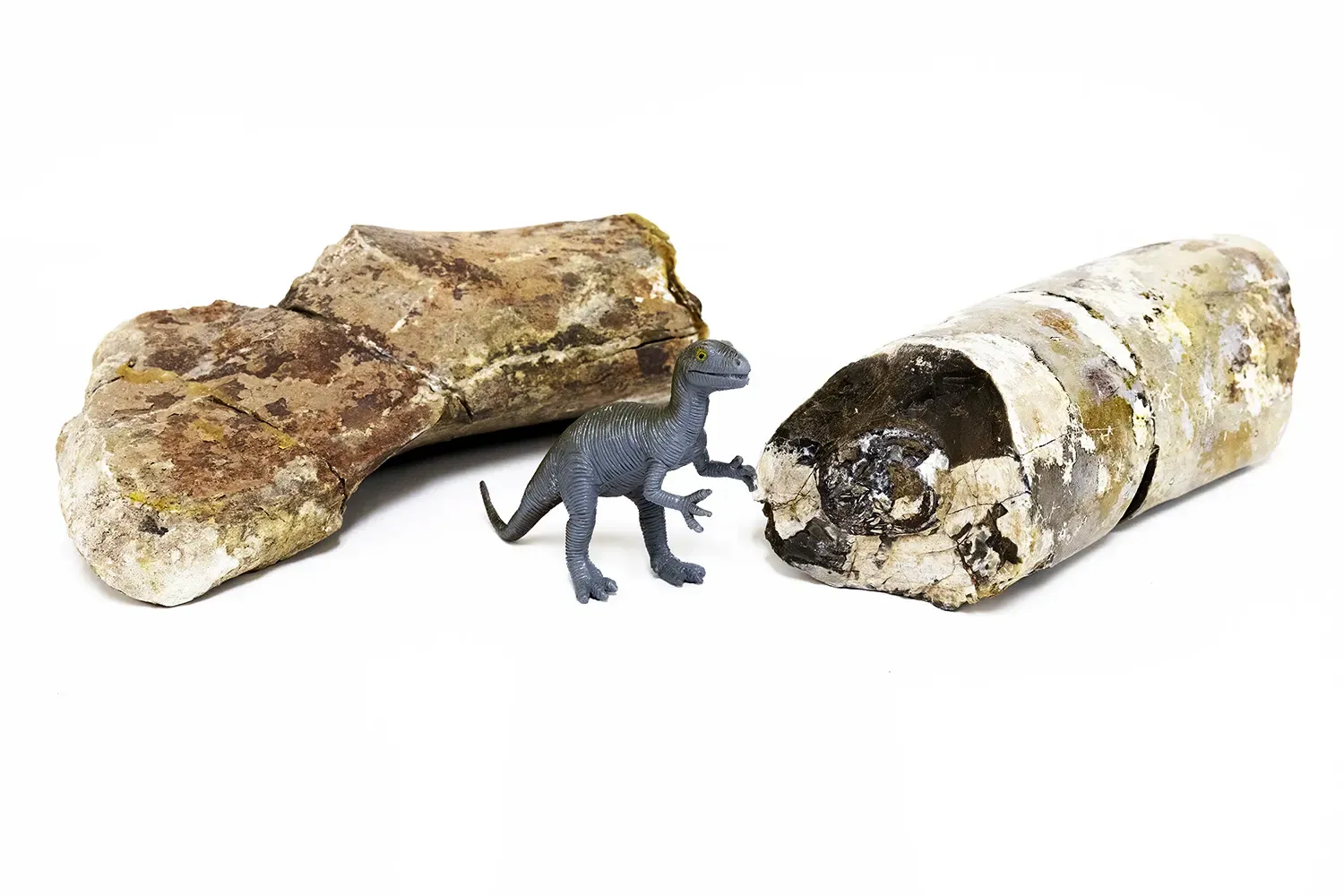ORAU’s Museum of Radiation and Radioactivity has hundreds of historic artifacts—some dating as early as the turn of the 20th century. But the oldest items are actually prehistoric. Yes, there are radioactive dinosaur bones in our collection!
The Museums of Western Colorado donated the two pieces to us after needing to isolate radioactive fossils. They told us the gifted bones are the partial femur of an Allosaurus.
Radioactive dinosaur bones The Museums of Western Colorado donated to ORAU’s Museum of Radiation and Radioactivity. Allosaurus skeleton (not radioactive!) at the Dinosaur Journey Museum of Western Colorado, Fruita, CO. Photo Credit: John Gnida, allosaurusroar.com

According to retired health physicist Paul Frame, Ph.D., the radioactivity is mostly due to uranium. Frame is the curator of ORAU’s Museum of Radiation and Radioactivity. As a health physicist, he applies scientific principles and practices to protect humans and the environment from the potential hazards of radiation. As a collector, he was thrilled to receive such a cool item to showcase. Dr. Frame explains that uranium can accumulate in various types of fossils and minerals including trees and bones. In the case of dinosaur bones, it happens when the local geology has uranium deposits. Some of the uranium gets into the groundwater and interacts with the porous matrix of the bones. Organic material in the bone causes a reducing environment which, in turn, causes the uranium to precipitate and accumulate.
It's a common practice for museums to measure fossils for radioactivity as part of their standard safety procedures because bones can absorb naturally radioactive material. This may be especially true of fossils that are pulled from uranium-rich areas. Many dinosaur bones found in the U.S. were discovered in Western and Southwestern states—and that’s where we experienced a Uranium rush.
Allosaurus, in particular, has been found mostly in this region known as the Morrison Formation which covers several states including Montana, South Dakota, Wyoming, Utah, Colorado, New Mexico and Oklahoma.
Although the levels of radiation in fossils are typically low, long-term exposure in enclosed spaces, like storage rooms, could potentially pose a health risk. Museums use tools such as Geiger counters to determine what safety precautions should be taken. The readings in this partial femur are low enough to be on display in ORAU’s Museum of Radiation and Radioactivity.
Though you only see a fragment of the full skeleton with this bone, scientists estimate Allosauruses could have been nearly 40 feet long and 16 feet tall while weighing as much as 2.5 tons.

Allosaurus 3D rendering from Getty Images
What a treasure to have in our Museum of Radiation and Radioactivity! To see the fossil in person, you can visit the collection at Pollard Center on ORAU’s main campus in Oak Ridge, Tenn., beginning in early 2025.

Toy allosaurus pictured with allosaurus bones in ORAU’s collection.